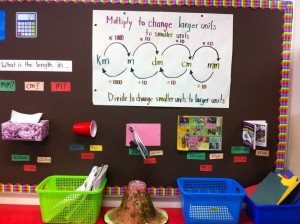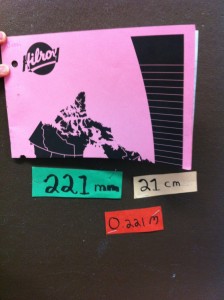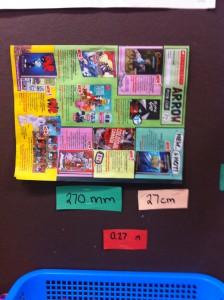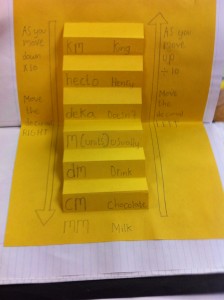Did You Know…? Mushed-up spiders was a treatment for the common cold in 16th century England.
Good afternoon,
Today the students and I spent time discussing a classroom project that we will be working on as part of our measurement unit in Math. We are going to be entering a team in the Food Bank’s CANstruction Jr. Competition on April 25th. This activity will require some fundraising by our students (getting the cans of food) as well as some planning time. We will be using a lot of our measuring skills to measure the perimeter and area of the structure we are creating throughout, and in planning our designs. We are using the video posted below as our inspiration. This video is an Olympic themed CANstruction. Ours will be related to the upcoming Summer Games. We are going to planning and designing a cycling themed CANstruction based on the image seen below, from the Summer Games website. Today students brought home permission forms about being part of the Build Team on the project. The Build team needs to be able to commit to attending practice sessions on Thursdays from 3:00-4:00 pm. Students will need to be picked up promptly at 4:00 pm at the front of the school. Students CAN walk home, however I would need written permission from a parent in order to allow students to leave alone at 4:00 pm. The Build Team will also need to commit to being able to attend (all day) the competition day on April 25th. Unfortunately, our Build Team can only be 10 students. Students who are not selected to be a member of the Build Team will still be very vital to the completion of this project. We have students working on the proposal, design, construction, measurement, etc. of the project throughout. Permission forms for those that are interested in joining the Build Team are due on Monday.
https://youtu.be/D-_VSg5LcFE

In Math today, students continued to review the concepts discussed earlier in our measurement unit – mainly conversions between mm, cm, and m. Students have been reviewed some strategies to help them to convert different units of measurement. We know that there are 10 mm in 1 cm, so to convert something from cm to mm you would need to multiply by 10. To convert something from mm to cm, you would need to divide by 10. This pattern is true for cm and dm, and dm and m. We also know that there are 100 mm in 1 dm, so to convert something from dm to mm you would need to multiply by 100. To convert something from mm to dm, you would need to divide by 100. This pattern is true for cm and m. Finally, we know that there are 1000 mm in 1 m, so to convert something from m to mm you would need to multiply by 1000. To convert something from mm to m, you would need to divide by 1000. It is the division that has many of us confused. Today we learned a trick to help us. When multiplying by 10, move the decimal place one place to the right. This makes the number 10x bigger. When dividing by 10, move the decimal place one place to the left. This makes the number 10x smaller. See the examples below:
1.0 m = 10 dm (the decimal place moves 1 place to the right when you multiply)
4.0 dm = 40 cm (the decimal place moves 1 place to the right when you multiply)
7.0 cm = 70 mm (the decimal place moves 1 place to the right when you multiply)
80.0 mm = 8.0 cm (the decimal place moves 1 place to the left when you divide)
95.0 cm = 9.5 dm (the decimal place moves 1 place to the left when you divide)
34.0 dm = 3.4 m (the decimal place moves 1 place to the left when you divide)
We can also use this trick to help us with multiplying and dividing by 100 (move the decimal 2 places) and with multiplying and dividing by 1000 (move the decimal 3 places). See the examples below:
145.0 m = 14 500 cm (the decimal place moves 2 places to the right when you multiply by 100)
230.0 m = 230 000 mm (the decimal place moves 3 places to the right when you multiply by 1000)
95.0 cm = 0.95 m (the decimal place moves 2 places to the left when you divide by 100)
145.0 mm = 0.145 m (the decimal place moves 3 places to the left when you divide by 1000)
We also made a staircase to help us to remember how many steps we have taken (how many times we have multiplied or divided by 10). You will notice that we included dekameters, hectometers, and kilometers on the staircase. The pattern is the same! There are 10 m in 1 dekameter. There are 10 dekameters in 1 hectometers, and there are 10 hectometers in 1 kilometer. That means that all our strategies (moving the decimal place, etc.) work for these larger units as well. The staircase is at the front of our Math duotangs as a reference sheet that can be used throughout the unit.
Agenda:
Read 20 minutes
Language Arts:
- Comic Strip Book Report – March 26th
Math:
- Practice Multiplication (2x, 4x, and 8x)
- Math Help – Wednesdays from 3:00 – 4:00 pm
- Mathletics Meeting – Thursday from 6:00 – 7:00 pm
- Pgs. 129-130 #1-3, 5-8
Science:
- Family Science Night – March 17th (info. to come)
- Volunteer Permission Forms – due Monday
Talent Show Auditions – Thursday, March 19th
Book Orders – due March 26th
Registration Forms – due ASAP
CANstruction Permission Forms – due Monday
Curling Forms – due ASAP
Spirit Week – Monday (Timberlea Spirit: Blue and White, Mini Wheats)






dear miss b
i was just on mathletics and there were only 1 person on were you on?
Sorry! I have been trying to get on, but my computer has kept logging me off this evening. I’m going to try for an extra 30 minutes tonight to see if I can get it to work.
Sorry, I’m going to give up 🙁 We’ll try again next week, I promise!
what if your book report is scooby doo would it be okay
You can do your book report on a Scooby Doo book, but you CANNOT copy the pictures from the book. Your comic must contain original pictures from your mind. Remember, you are practicing the creating images strategy, so you are illustrating the movie that appears in YOUR head when you are reading, and the details that you imagined. You are not copying a picture from a book.
hi
HI!!!!!!!!!!!!!!!!!!!!!!!!!!!!!!!!!!!!!!!!!!!!!
Hi Nazrul! How are you? Did your move go okay?